Last updated on
Discover the most efficient techniques for maneuvering a couch through tight spaces as we share practical tips to navigate narrow hallways with ease.
Have you ever found the perfect couch for your living room, only to realize that it won’t fit through your narrow hallway? It can be frustrating to have your dreams of a cozy living space dashed by a logistical problem. But fear not! With some careful planning and a few tricks up your sleeve, you can successfully navigate even the tightest of hallways with ease.
In this article, we’ll share some expert tips on how to get a couch through a narrow hallway without damaging your furniture or walls. So grab a measuring tape and let’s get started!
Key takeaways:
- Measure the couch and hallway before attempting to move it.
- Measure doorways and arches to ensure the couch can fit through them.
- Consider the size and dimensions of the couch before attempting to move it.
- Plan your route and identify potential obstacles in the hallway.
- Explore alternative access points, such as windows or adjacent rooms.
Table of Contents
Measure the Couch and Hallway

The first step in getting a couch through a narrow hallway is to measure both the couch and the hallway. This may seem like an obvious step, but it’s essential to ensure that your furniture will fit through the space without causing any damage.
Start by measuring the height, width, and depth of your couch. Then measure all points along your hallway where there might be obstructions or tight corners.
Once you have these measurements, compare them with each other to determine if there are any areas where you’ll need extra clearance or maneuvering room. If necessary, consider disassembling parts of your sofa before moving it through tight spaces.
Measure Doorways and Arches
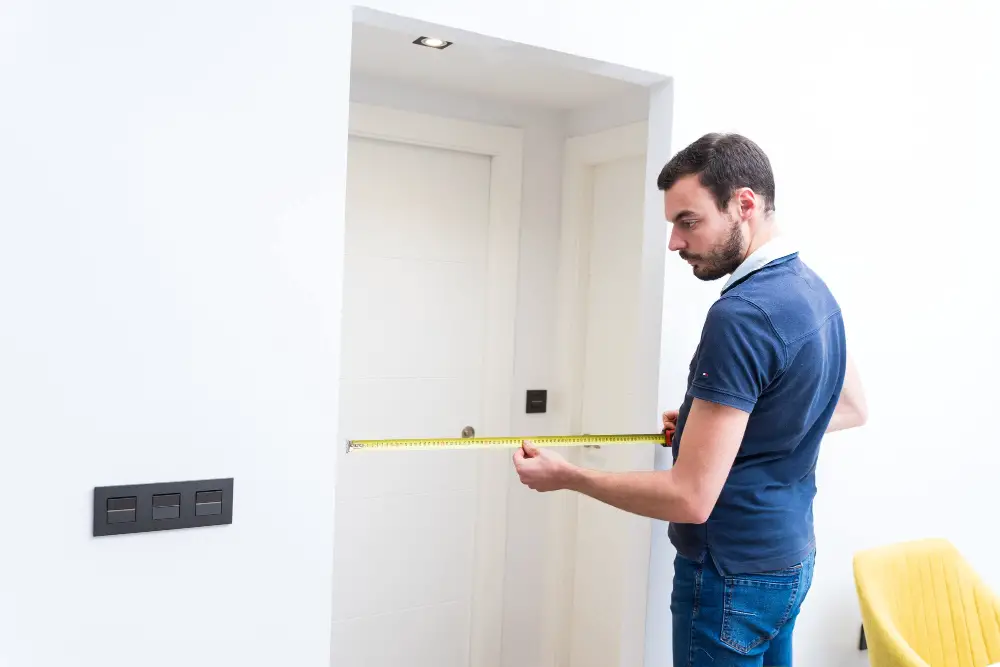
This will help you determine if your couch can fit through them or not. Measure the height, width, and depth of each opening that your couch needs to pass through.
It’s important to note that even if your doorway or arch appears wide enough for the couch, there may be other factors at play such as tight corners or low ceilings which could make it difficult for you to maneuver around with ease.
Once you have measured all openings along the route from where your sofa currently sits until its final destination in another room, compare these measurements against those of your furniture piece.
Know the Size of Your Couch
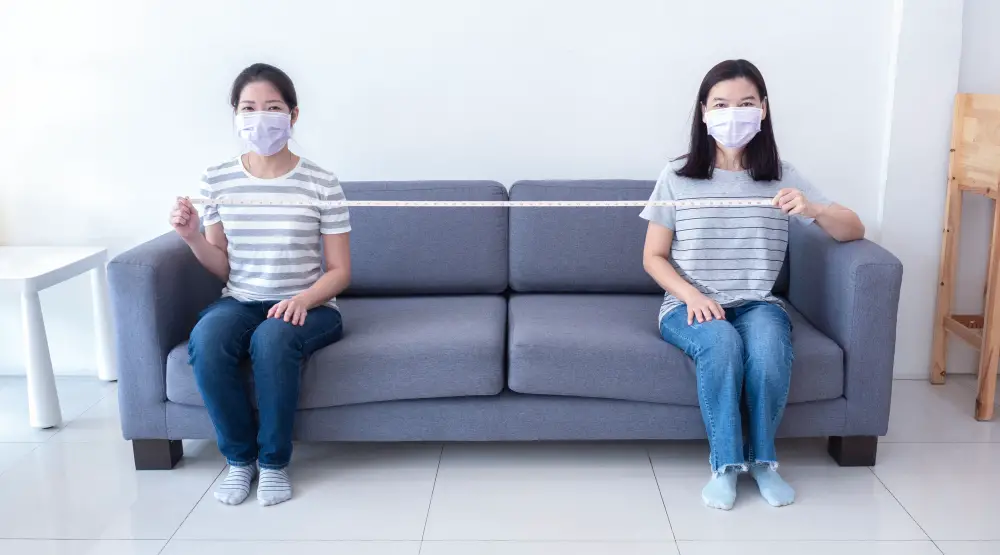
Measure the length, width, and height of your couch and compare it with the dimensions of your hallway. Knowing these measurements will help you determine whether or not you can fit the couch through without any issues.
It’s also important to consider any protruding parts such as armrests or legs that may add extra inches to its overall size. Keep in mind that even if there is enough space for most parts of the sofa, some areas like corners might be too tight for certain sections.
If possible, check with manufacturers’ specifications before purchasing a new sofa so that you can ensure it fits comfortably into all spaces in which you plan on placing it.
Plan Your Route

Take a good look at the space and identify any potential obstacles that may hinder the movement of your furniture. Consider factors such as sharp corners, narrow doorways or arches, low ceilings or light fixtures that could get in the way.
It is also important to check out other access points like windows or balconies if they are available. If there is no alternative entrance point for moving large items into a room with narrow hallways, then planning becomes even more critical.
By taking some time to plan ahead before attempting to move your couch through a tight space will save you from unnecessary stress and damage caused by hasty decisions made on-the-spot during transportation.
Check Out Other Access Points

Check out other access points in your home that may provide a more direct route for moving furniture. For example, if you have a large window or sliding glass door nearby, you may be able to remove the screen and carefully slide the couch through that opening.
Another option is to move the couch through an adjacent room with larger doors or hallways. This might require temporarily removing some of your existing furniture from those rooms but can save you time and effort in maneuvering around tight corners.
Before attempting any alternative routes, make sure they are safe and practical for both yourself and others involved in moving the furniture. Always measure all openings along potential paths before making any decisions on which path will work best.
Correlate Couch and Opening Sizes

This step is crucial in determining whether or not your couch will fit through the opening. If you’re dealing with a narrow hallway, chances are that there won’t be much wiggle room for error.
To ensure a successful move, measure the height and width of all openings along your planned route – doorways, arches or any other access points. Compare these measurements with those of your couch to determine if there’s enough clearance space for it to pass through comfortably.
If you find that there isn’t enough clearance space between an opening and the couch frame (even after removing cushions), don’t force it! Trying too hard can damage both furniture and walls. Instead, consider disassembling parts like legs or armrests temporarily so that they can be reattached later on once inside its new location.
Get the Room Prepared
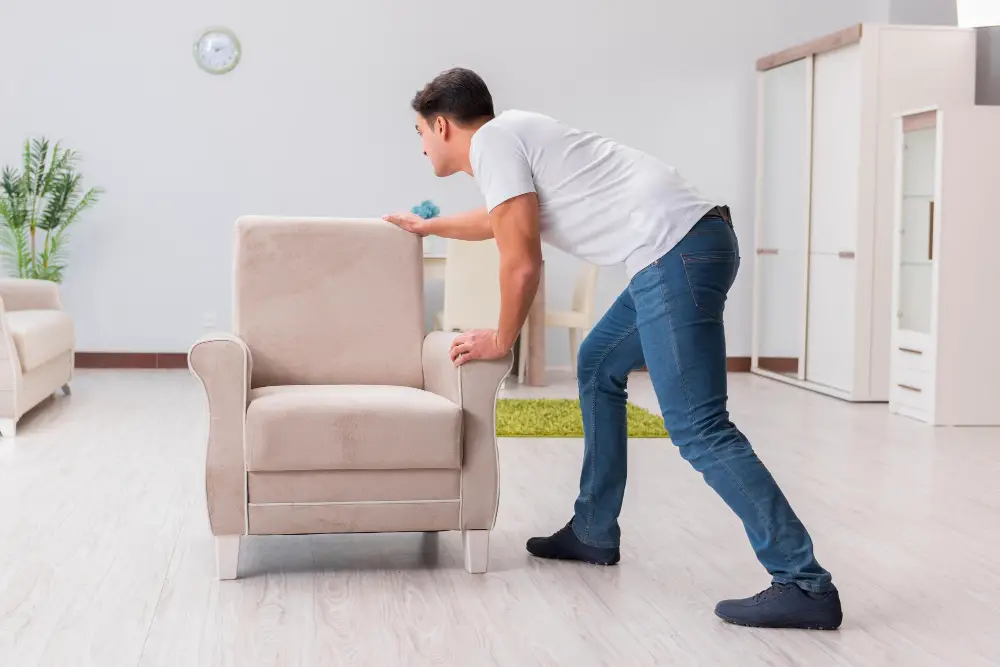
This step will help ensure that everything goes smoothly and prevent any damage to your furniture or walls.
Firstly, remove any obstacles from the hallway and surrounding areas. Move small tables, chairs or other items out of the way so that there is enough space for you to maneuver around with ease.
Next, clear doorways leading into and out of the room where you plan on placing your couch. Make sure there are no rugs or mats in front of these doors as they can cause tripping hazards during movement.
If necessary, remove doors from their hinges by unscrewing them carefully using a screwdriver. You may also need to take off door stops if they protrude too far into the doorway opening.
Remove Obstacles
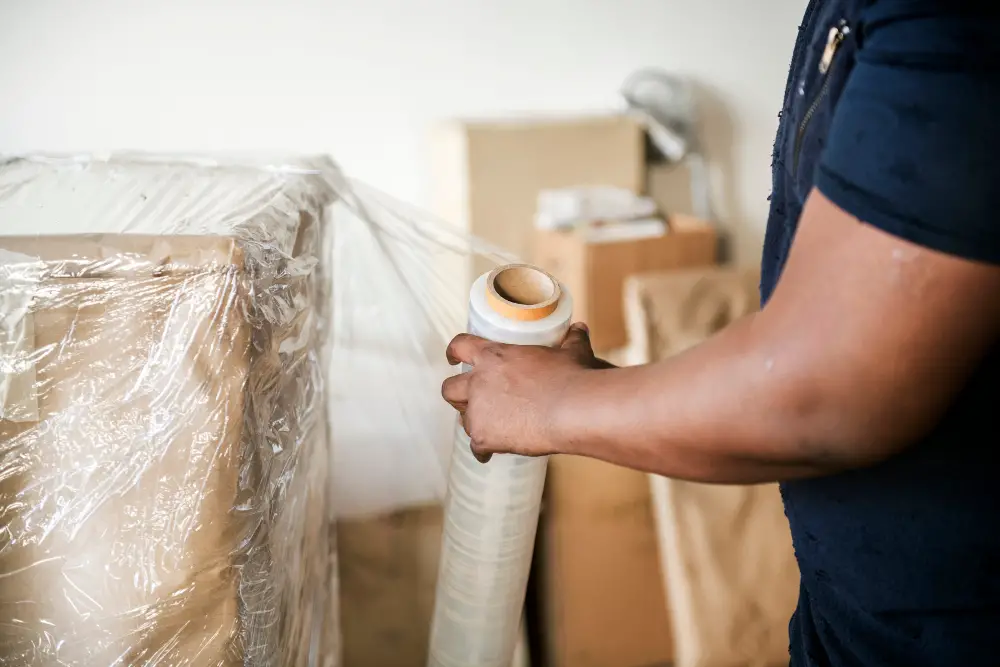
Take a look around the hallway and identify anything that could get in your way or cause damage to either the furniture or walls. This includes rugs, decorative items, artwork hanging on walls, and other pieces of furniture.
If there are any fragile objects nearby that can’t be moved out of harm’s way entirely, cover them with blankets or bubble wrap for protection. Also consider removing light fixtures if they’re too close to where you’ll be maneuvering the couch.
Clear Doorways

Remove any furniture or decor items that may be in the way and ensure there is enough space for you to maneuver the couch without damaging anything.
If you have doors on your hallways, remove them from their hinges as this will give you more room to work with. If removing doors isn’t an option, consider using bungee cords or rope to tie them back securely.
It’s also essential to check if there are any door stops installed along the hallway walls. These small metal pieces can prevent a door from opening too far and can cause damage when moving large objects like a couch through tight spaces.
Remove these before starting so they don’t get in your way during the process.
Remove the Doors
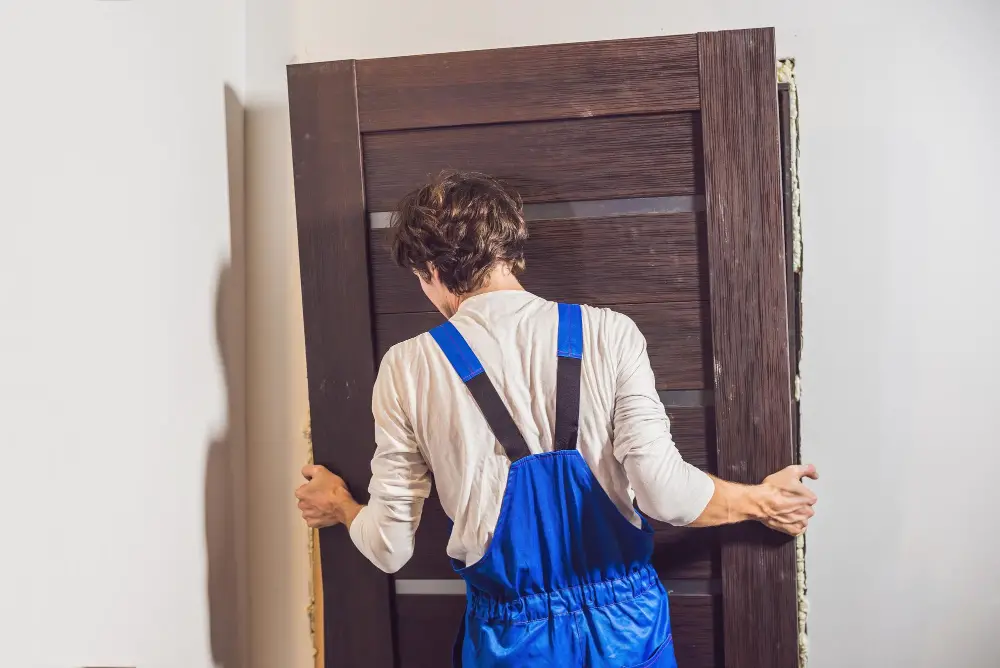
This is a common solution for moving large furniture items through tight spaces.
Before removing any doors from their hinges, make sure that they are not load-bearing or structural. If in doubt, consult with a professional contractor or handyman before proceeding.
Once you have determined that it’s safe to remove the door(s), use a screwdriver or drill to take out all of the screws holding them in place. Have someone hold onto each side of the door as you unscrew it so that it doesn’t fall off its hinges unexpectedly.
Remove Door Stops and Hinges (Optional)
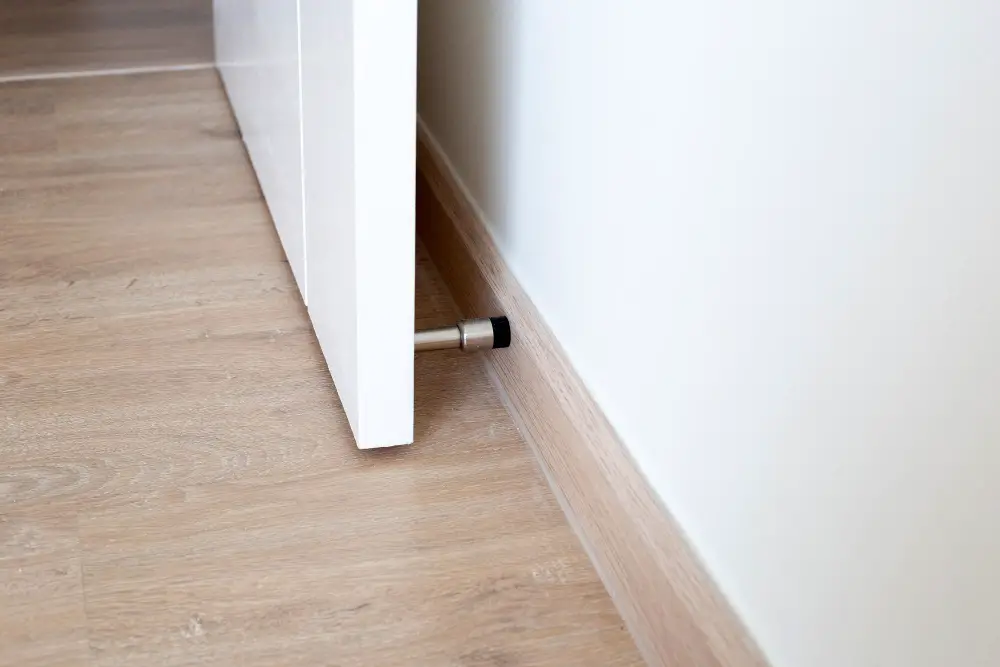
This is an optional step that requires some basic tools and DIY skills. First, remove the hinge pins by tapping them out with a hammer and screwdriver or using pliers to pull them out.
Then, carefully lift the door off its hinges and set it aside in a safe place.
Next, use a pry bar or flathead screwdriver to remove any door stops that are preventing your couch from fitting through the doorway. Door stops are small pieces of wood attached to either side of the frame that stop doors from swinging too far open or closed.
Removing these obstacles can give you an extra inch or two of clearance for your furniture – just be sure not to damage any walls in the process! Remember: this step is entirely optional but may make all difference when trying move large items like sofas around tight corners.
Disassemble the Couch
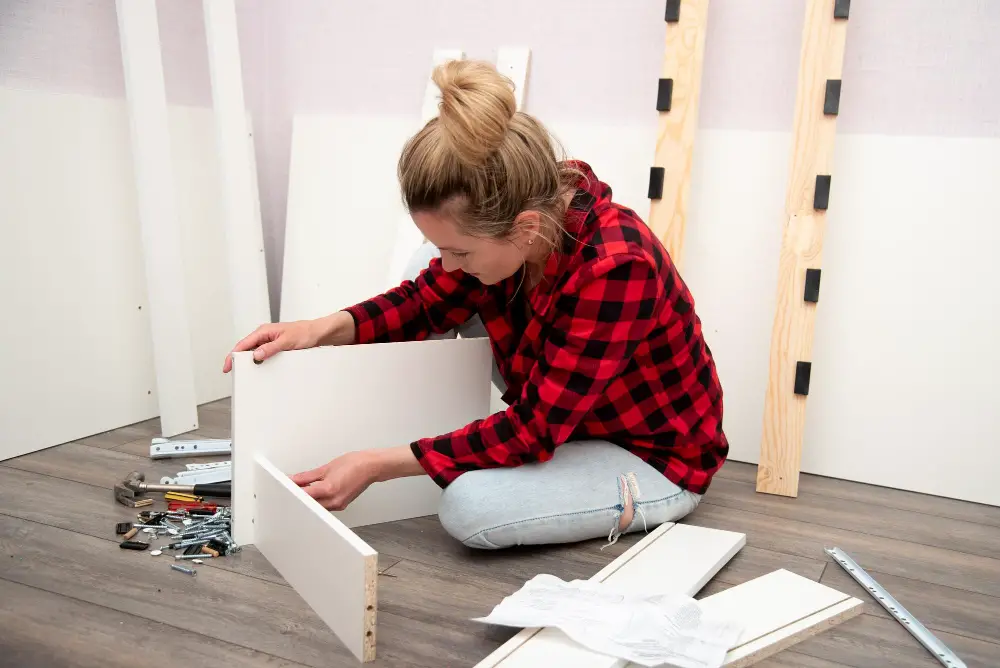
Before you start taking apart your furniture, make sure you have a clear understanding of how it was put together in the first place. Look for screws or bolts that hold different parts of the couch together and use a screwdriver or wrench to remove them carefully.
Start by removing any cushions from the sofa and then detach any legs that can be unscrewed. If there are armrests on either side of the couch, check if they can be removed as well.
Once all removable parts are taken off, try fitting each piece through one at a time.
Be careful when handling heavy pieces like metal frames or wooden boards so as not to damage them while moving around corners and tight spaces.
Remove Cushions and Other Parts

The first step is to remove any cushions or pillows that can be taken off easily. This will make the couch narrower and easier to maneuver through tight spaces.
Depending on your couch design, you may also need to remove other parts such as legs or arms. Check for screws or bolts holding these pieces in place and use a screwdriver or wrench as needed.
Be sure to keep all removed parts in a safe location so they don’t get lost during the move. Once you’ve removed everything necessary, measure again before attempting another pass through the hallway.
Protect Nearby Walls

One way to do this is by using moving blankets or old sheets as a barrier between the couch and wall. Simply wrap the blanket around any exposed parts of the couch that may come into contact with walls.
Another option is to use foam padding or pool noodles on corners where there may be sharp edges. This will help prevent damage if you accidentally bump into a wall while maneuvering your furniture.
If you’re concerned about damaging paint or wallpaper, consider applying painter’s tape along any areas that are likely to come in contact with your furniture during transport.
Use Furniture Sliders
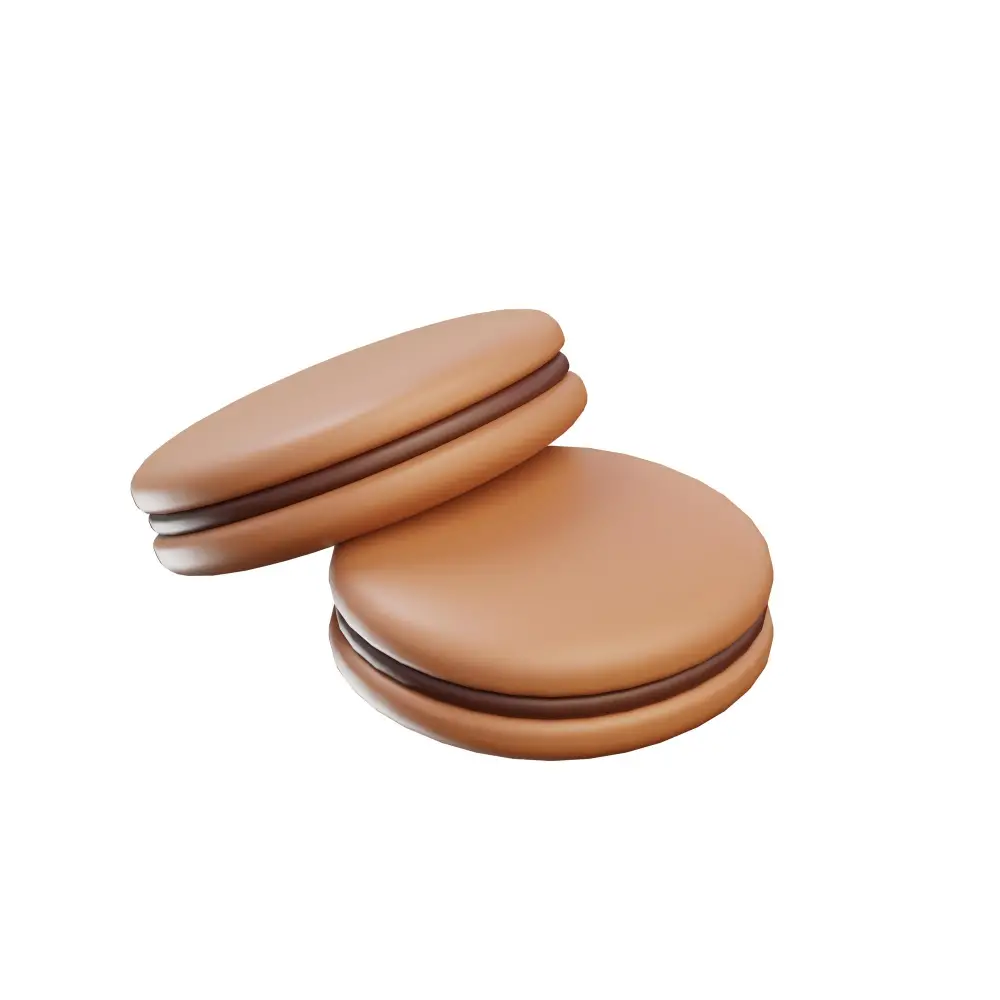
These small discs are designed to fit under the legs or base of your furniture and make it easy to slide across hardwood floors or carpeting without damaging either surface. To use them, simply lift one corner of the couch at a time and place the slider underneath each leg before gently lowering it back down.
Once all four sliders are in place, you should be able to easily push or pull your couch through even narrow hallways with minimal effort. Just remember that while furniture sliders can make moving heavy items much easier, they won’t protect your walls from scratches or dents if you accidentally bump into them along the way.
Utilize Moving Straps
These straps distribute the weight of the couch evenly across your body, making it easier to lift and maneuver through tight spaces. To use moving straps effectively, you’ll need two people: one at each end of the couch.
Start by positioning yourselves on either side of the couch with your backs facing each other. Place one end of the strap under each person’s arm and adjust them so that they’re snug against your shoulders.
Next, have both people bend their knees slightly and lift together using their legs rather than their back muscles to avoid injury or strain. Walk slowly in unison while keeping a firm grip on both ends of the strap until you reach your destination.
Pivot the Couch
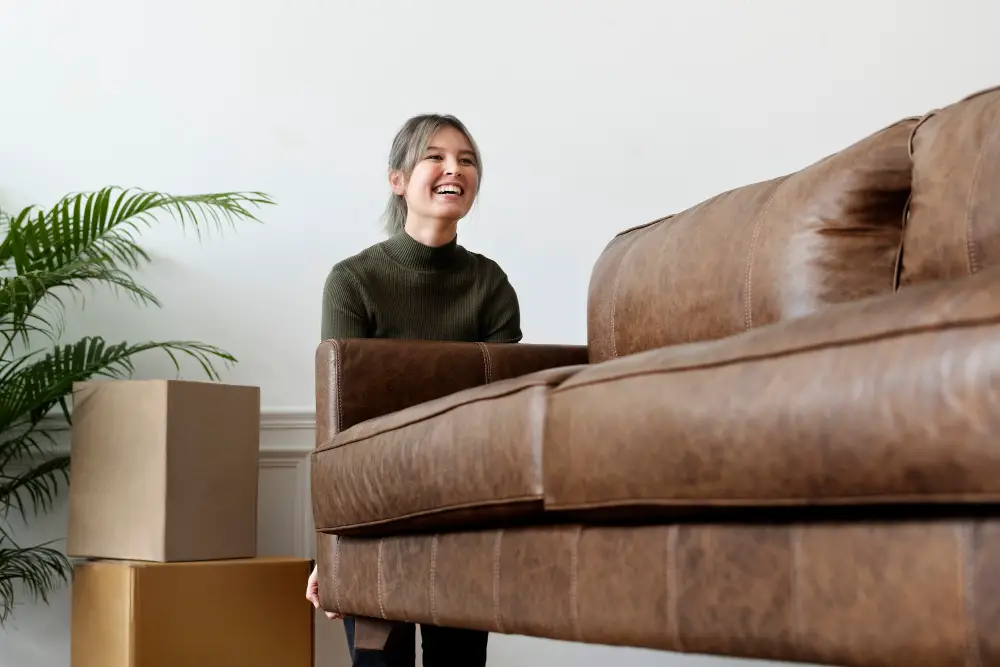
This technique involves standing the couch on one end and rotating it around a corner or angle in order to fit through a tight space.
To pivot your couch, first clear any obstacles from around the area where you’ll be maneuvering. Then, stand one end of your couch up vertically so that it rests on its armrests or backrest.
Make sure that there is enough clearance above for this method to work.
Next, carefully rotate the bottom of your sofa towards whichever direction will allow you to move it forward without hitting any walls or door frames. You may need someone else’s help with this step if your sofa is particularly heavy.
Once you have rotated as much as possible while keeping everything level and stable, gently lower down onto its feet again before continuing forward into another room.
Try the Tilt and Pivot Method

This technique involves tilting your couch at an angle so that one end is higher than the other, then pivoting it around corners or tight spaces.
To do this, have two people lift one end of the couch while keeping it level. Then slowly tilt that side up towards a 45-degree angle while keeping control of its weight.
The person on top should guide and push gently as they move forward with their feet until they reach a corner or turn in your hallway.
Consider a Moving Dolly
A dolly is essentially a small platform on wheels that can help you move heavy objects with ease. To use one for your couch, simply lift the furniture onto the dolly and wheel it through the hallway.
When choosing a moving dolly, make sure to select one that’s sturdy enough to support the weight of your couch. You’ll also want to ensure that its dimensions are appropriate for navigating tight spaces.
While using a moving dolly may require some extra effort and coordination on your part, it can be an effective solution when all else fails. Just remember: safety first! Always have someone assist you in lifting and maneuvering heavy furniture items like sofas or sectionals onto dollies or other equipment designed for this purpose.
Seek Professional Help
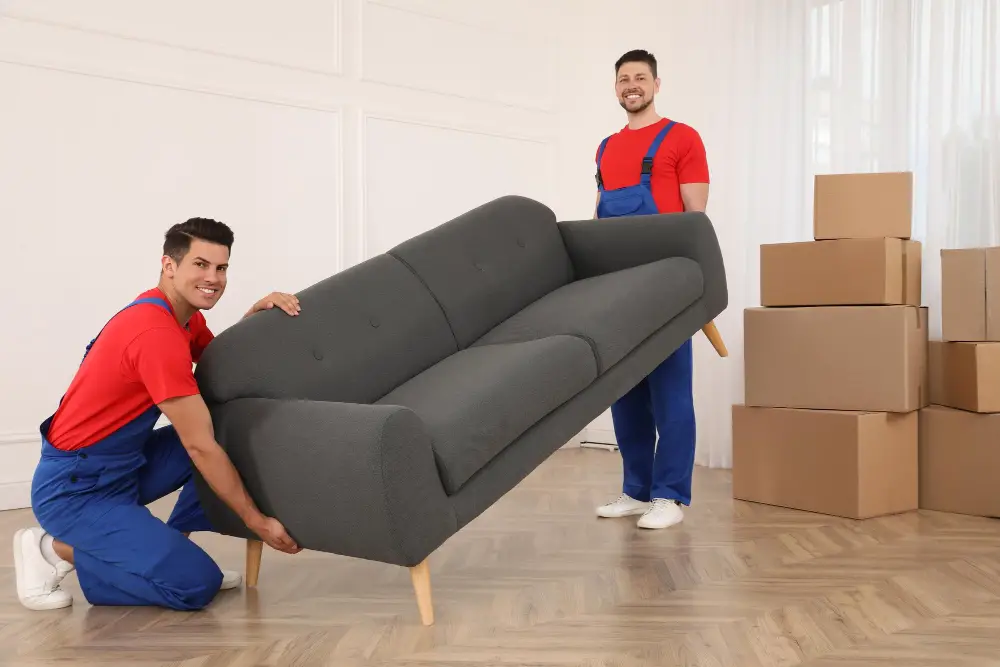
Moving companies have experience with navigating tight spaces and can often find a solution that you might not have thought of. They also come equipped with specialized tools like furniture dollies, straps, and ramps that make moving large items much easier.
While hiring professionals will cost more than doing it yourself, it’s important to weigh up the potential costs of damaging your furniture or walls in the process. Plus, if something does go wrong during a DIY move attempt – such as an injury or damage – then this could end up costing even more money in repairs.
Ultimately though whether you decide on going solo or seeking professional help depends on how confident you are about getting your couch through without causing any damage along the way!
FAQ
How do you get a couch through a tight hallway?
To get a couch through a tight hallway, slide it towards the door and move it through either straight or in a hooking motion, with the back or seat entering first, or if possible, carry it horizontally and level.
What if my sofa doesn’t fit through the door?
If your sofa doesn’t fit through the door, remove the door by tapping out the hinge pins and possibly the hinges, providing extra inches for the sofa to fit through.
How do you get a wide couch through a narrow door?
To get a wide couch through a narrow door, tilt the sofa on its side (vertically) and slide it through the doorway using a hooking motion, or for a loveseat, slide it in an upright position.
What are some techniques for maneuvering a large couch around tight corners in a hallway?
Some techniques for maneuvering a large couch around tight corners in a hallway include lifting it at an angle, pivoting while turning, and using furniture sliders.
Are there specific tools or equipment that can assist in moving a couch through a narrow space?
Using tools like furniture sliders, dolly, shoulder straps, and moving blankets can assist in moving a couch through a narrow space.
How can I disassemble and reassemble my couch to make it easier to fit through a tight doorway or hallway?
To disassemble and reassemble your couch for easier movement through tight spaces, carefully remove cushions, detach any removable parts using appropriate tools, and then carefully reattach the pieces once the couch has been moved to its new location.





